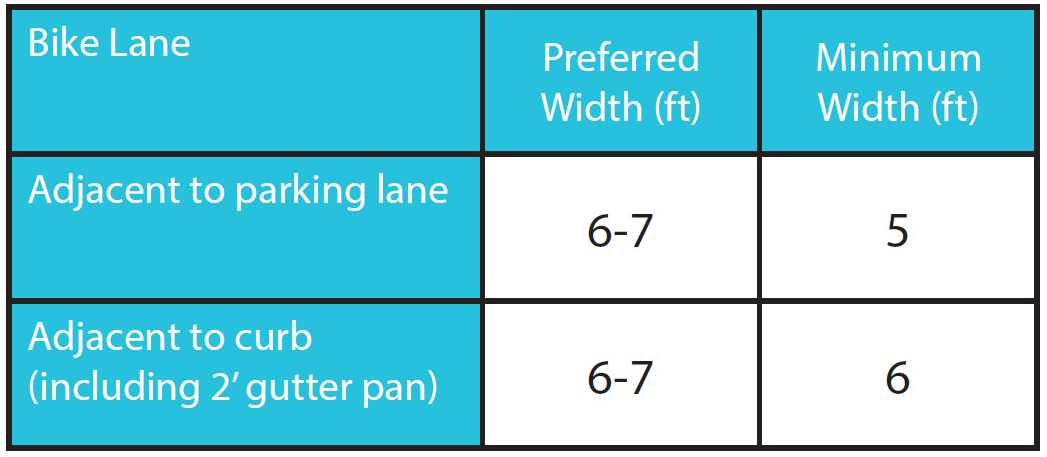3.4K Bike lanes, unprotected
Search Content
Download PDF
Print Guide
Introduction
Bike lanes provided dedicated space in the roadway through signing and striping for people to bike or travel via micromobility. Bike lanes or buffered bike lanes may be considered with any street retrofit project that overlaps with the All Ages and Abilities Network. Unprotected bike lanes should generally not be used for street reconstruction projects as they are not low-stress All Ages and Abilities bikeways.
Design Considerations
|
Operation |
Bike lanes are intended for one-way travel and are typically provided on both sides of two-way streets, and on one side of one-way streets. |
|
Dimensions |
|
|
Space constrained locations |
Where space is constrained adjacent to a curb extension, a modified B612 (1’) curb may be used for short durations to maintain additional smooth ridable bike lane surface. Locations for installing modified B612 must be reviewed and approved by Surface Water and Sewers before installation. |
|
Maintenance |
Reliable snow and ice clearance/removal for standard unprotected bike lanes is challenging, especially when located adjacent to a parking lane. |
|
Intersection guidance |
See also bikeway intersection design guidance. |





